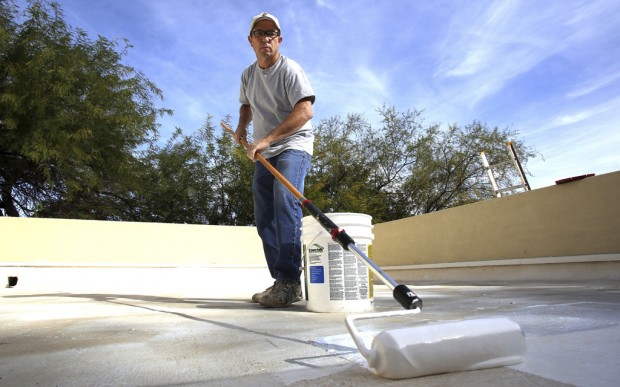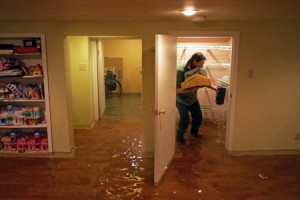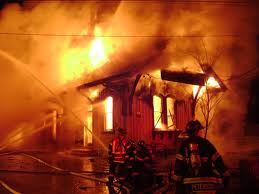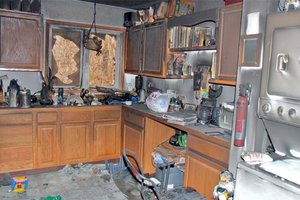Beat summer heat, and save money with your Rowlett roofing repair!
Looking for ways to beat the heat? Check out how they do it in Arizona, and then call Go Go Green Roofing and Solar to learn how we can save you money for you Rowlett roofing needs.
“Top it off: Coating can save roof, energy
December 09, 2012 12:00 am • Dan Sorenson Special to Arizona Daily Star
Other than servicing a swamp cooler, coating your flat (built-up) roof is probably the most fundamental task for an Arizona homeowner – and the one with the greatest payback. If done right, and in time, it will extend the life of a flat roof and prevent dreaded leaks.
But doing it right involves more than buying a couple of expensive five-gallon buckets of white coating, a giant paint roller with a long handle, and climbing a ladder to the roof for a couple of hours of fun.
Flat roofs work here, as long as they’re in good shape – waterproof, with no cracks or fissures that can let our occasional torrential rains leak through, damaging your ceilings and the things below.
Robert Friedman, owner of All Dry Roofing, a longtime Tucson-area roofing contractor, says recoating your roof about every four years is the rule of thumb, a safe bet – as long as the roof underneath is in good shape.
Know the product
When choosing a roof coating, look for two things: the ratio of white pigment in the form of titanium dioxide (the same sun-blocking material in many sunscreens) and resins (the matrix that determines the flexibility of the coating) in the product, says David Mahmoodi, general manager of Tucson Rubberized Coatings, a local manufacturer and retailer of roof coatings.
Mahmoodi says good quality roof coating should have at least 1 pound of titanium dioxide per gallon and that there should be as much, or more, resin per gallon. Much the remaining ingredients of a coating solution is thickeners and emulsifiers, which make the coating spreadable and keep the ingredients from separating.
Not all resins are equal, says Mahmoodi. Some are more flexible than others. And they also have differing abilities to resist picking up the dust and dirt that yellow white roof coatings over time. As they yellow, or brown, Mahmoodi says they lose their ability to reflect heat, raising your cooling costs.
Better formulas also resist “chalking,” the degradation of the coating that leads to the surface turning to powder and losing its reflectivity and water resistance.
Friedman warns against relying solely on the elastomeric – ability of a coating to stretch with the expansions and contractions of a roof – ratings of various roof coatings. The more flexible the coating, the better, but if there are gaps and cracks in your roof, even the best coating isn’t going to prevent leaks, Friedman says. Our extreme heat and overnight cooling cause such dramatic expansion and contraction that a rubberized coating over a crack isn’t going to remain waterproof for long.
“In this climate if you leave a roof black it absorbs so much UV (ultra violet light) it degrades – just as if you park your black car in the driveway instead of the garage,” says Friedman.
Preparation matters
The roof must also be solid, without cracks or fissures, and clean before a coating is applied in order for the product warranty to be in effect.
“Like any paint job, 80 percent of the work is prep,” says Friedman. “And prep on a roof means you check, you look at penetrations (pipes, vents, anything going through the surface of the roof) and the flashings” (the metal edges of the roof). He says any flaws in the roof should be repaired and allowed to cure before coating.
The cleaning that should precede any coating typically involves the use of TSP (trisodium phosphate) to remove dirt and grease from the roof, so the coating can adhere; and/or, a high-pressure water sprayer. Mahmoodi says you should sprinkle TSP granules on the roof, hose the roof down and sweep it off with a soft bristle broom and allow the roof to dry for several hours before applying the coating. At this time of year, that usually means doing it the day before you apply the coating.
You can also use a high-pressure sprayer, Mahmoodi says. Some contractors, he says, use TSP and a high-pressure sprayer, while others only use the sprayer. Most homeowners, he says, use the TSP, hose and broom technique.
Keep your cool
A proper roof coating’s benefits go beyond forestalling an expensive new roof job and the strife and damage that goes with a roof leak. Coating your roof also reduces your energy costs, at least for cooling, Friedman and Mahmoodi say.
If you lived in North Dakota – or much of the Northern U.S. – a black roof would make more sense, says Friedman.
Dark colors absorb heat. Light colors reflect it. Heat gain is more of an issue here in the desert, so we tend toward lighter colors.
Desert tan, a color option offered by some roof coating manufacturers, is a compromise, about 10 percent less reflective than white coatings.
Mahmoodi says another development in some roof coatings is the use of insulating microspheres, microscopic ceramic particles that reflect light and heat, but also insulate to keep heat in the house – an advantage in the winter.
“Generally, white coatings were good at cooling, but not heating. But insulating microspheres are great for heating as well,” he says. “They help to reflect sunlight in summer but to keep heat in in the winter. Microspheres have been around, but they’ve been hard to disperse. We’ve altered our formula to suspend them so that you get an even amount.”
Tips for successful roof coating
• Plan on applying two coats, unless you’ve coated the area in the last couple of years and are using the highest quality material.
• Repair any cracks or other penetrations of the rolled – built-up – roofing, and allow the repairs to cure.
• Clean the roof with either, or both, TSP (trisodium phosphate) sprinkled on the roof, wet down with water and brushed off with a soft bristle broom, and/or a high-pressure sprayer.
• Allow the roof to dry for several hours (at this time of year, until the next day) before proceeding with the first coat.
• Apply the coating liberally.
• Allow the coating to dry for several hours, at least five hours, according to Friedman, before exposing to water or applying a second coat. He says most coatings are water-based and that they cure when their water content evaporates. This time of year that could take several days, and a minimum temperature of at least 55 degrees during that time. In the summer, he says, curing can take just a few hours.
• Check the weather forecast before you start.
Dan Sorenson is a Tucson-based freelance writer.”
Roof top coating may be okay in Arizona, but for you Rowlett roof repair, why not go with the sure choice and look into a metal roof. Not only do they prevent extreme damage from wind, hail and even fire, but they are also environmentally friendly. Go Go Green Roofing and Solar speacializes in all of your Rowlett roofing needs to get you the highest quality roof for your home. Call us at (682) 325-2682 to schedule your free inspection, and discuss upgrading you to an energy efficient metal roof!




